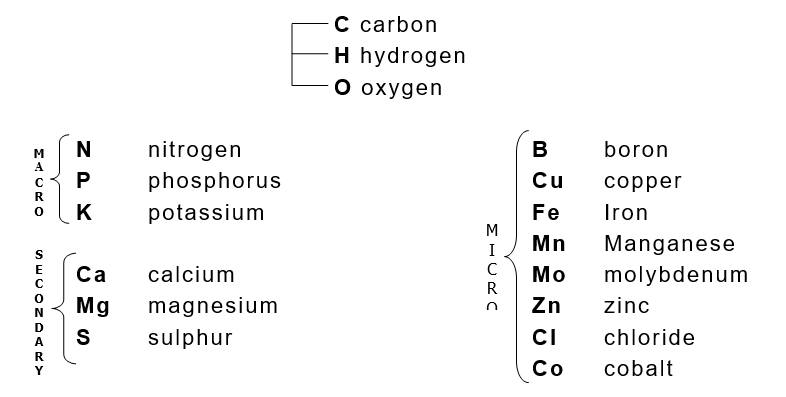Humus Fertilizer
HUMUS CONCENTRATE BIO-ORGANIC FERTILIZERHumus… is a heterogeneous mixture of naturally occurring organic carbon that arise from the decay of plant & animal residue through the biological activities of micro-organisms such as bacteria, algae and earthworms. These organisms break the chemical bonds in the residue as they digest the carbon. The biological center, the main fraction of natural humic matter – contains humic acid and fulvic acid. All essential elements that compose the Humic Acids are charted out below…

The above mentioned chart also indicates
ESSENTIAL ELEMENTS / NUTRIENTS NEEDED FOR PLANT GROWTH.
Humic acid is thus an excellent natural & organic way to provide plants and soil with a concentrated dose of essential nutrients, vitamins and trace elements.
HUMIC SUBSTANCES ARE NOW RECOGNIZED BY MOST SOIL SCIENTISTS AND AGRONOMISTS AS THE MOST IMPORTANT COMPONENTS OF A HEALTHY FERTILE SOIL AND THE MOST IMPORTANT CONTRIBUTORS TO A HEALTHY VITAL PLANT.
NATURAL SOURCES OF HUMIC SUBSTANCES
A Comparative Study
| NATURAL SOURCE | % HUMIC/ FULVIC ACID | FERTILIZER VALUE 10 (best) 1 (worst) |
|---|---|---|
| Leonardite | 25 to 90 | 5 to 10 |
| Compost | 5 to 25 | 3 to 6 |
| Peat Moss | 5 to 20 | 3 to 5 |
| Lignite | 5 to 15 | 3 to 5 |
| Sludge | 1 to 5 | 1 to 3 |
| Manure | 1 to 3 | 2 to 3 |
| Soft Coal | 2 to 5 | 1 to 3 |
| Hard Coal | 0 to 1 | 0 to 1 |
The above-tabled research indicates that the best source of high quality humic substance is from a salt-free deposit of highly oxidized carbon called LEONARDITE.
LEONARDITE is an organic matter, which has not reached the state of coal & differs from soft brown coal (lignite) by its high oxidation degree & high humic acids content as well as higher carboxyl groups.
Humic Acids are known to produce three types of effects: Physical, Chemical and Biological.
BENEFITS
CHEMICAL BENEFITS
- Neutralizes both – acid and alkaline soils; regulate the pH-value of soils.
- Improves and optimizes the uptake of nutrients and water by plants.
- Increases buffering properties of soil.
- Acts as natural chelator for metal ions under alkaline conditions and promotes their uptake by the roots.
- Rich in both organic and mineral substances essential to plant growth.
- Retain water soluble inorganic fertilizers in the root zones and reduces their leaching.
- Possesses extremely high cation-exchange capacities.
- Promotes the conversion of nutrient elements (N, P, K + Fe, Zn and other trace elements) into forms readily available to plants.
- Enhances the uptake of nitrogen by plants.
- Reduces the reaction of phosphorus with Ca, Fe, Mg and Al and liberates it into a form that is available and beneficial to plants.
- Liberates carbon dioxide from soil calcium carbonate and enables its use in photosynthesis.
- Helps to eliminate chlorosis due to iron deficiency in plants.
- Reduces the availability of toxic substances in soils.
KEY ECONOMIC BENEFITS – IN NUTSHELL
- Improves seed germination
- Increases yield from plants and vegetables.
- Assists in greater root development.
- Re-minerialization of depleted trace minerals to the soil.
- Better nutrition from edible plants and vegetables.
- Increases sugar, flavor and nutrient content.
- Develops better root systems that produces stronger, healthier plants, more able to resist pests and drought conditions.
- Reduces costs of other fertilizers, herbicides & pesticides.
- Lessens the cost of using methods to remove weeds from the plants.
PHYSICAL BENEFITS
- Increased water & nutrient holding capacity of soil.
- Increased aeration of soil.
- Improved soil workability.
- Reduced soil erosion.
- Improved drought tolerance.
- Holds exchangeable plant nutrients – Has a high Base Exchange capacity – an important base for soil fertility concepts.
- Affects the release of plant nutrients through slow decomposition by organisms, especially nitrogen release.
- Stimulates existing soil bacteria.
- Makes soil more friable or crumbly.
- The problem of weed growing is very much reduced – almost nil.
BIOLOGICAL BENEFITS
- Stimulates plant enzymes and increases their production.
- Acts as an organic catalyst in many biological processes.
- Stimulates growth and proliferation of desirable micro-organisms in soil.
- Enhances plant’s natural resistance against disease and pest.
- Stimulates root growth, especially vertically and enable better uptake of nutrients.
- Increases root respiration and root formation.
- Promotes the development of chlorophyll, sugars and amino acids in plants and aids in photosynthesis.
- Increases vitamin and mineral content of plants.
- Thickens the cell walls in fruits and prolongs the storing and shelf time.
- Increases germination and viability of seeds.
- Stimulates plant growth (higher biomass production) by accelerating cell division, increasing the rate of development in root systems and increasing the yield of dry matter.
- Increases the quality of yields; improve their physical appearance and nutritional value.
APPLICATIONS OF HUMUS CONCENTRATE BIO-ORGANIC FERTILIZER
Agriculture
Turf Management / Maintenance
Dune Stabilization
Horticulture
Mine / Landfill Reclamation
Hydroseeding
Floriculture
Road/Highway Erosion Control
Aquaculture (fisheries)
Pasture Land, Conservation of Natural Resources
Poultry Feed
HOW TO USE?
- For using the humus concentrate there should be proper moisture in the soil.
- This fertilizer should be put deep in the furrows & then it should be covered with soil – spreading it evenly.
- For vegetables & crops that take longer time to grow, it is better to use Humus twice during different stages of the growth of the crop for best results.
- Besides using Bioorganic Humus as the base fertilizer, it can also be used very successfully at different stages of growth of a plant or a crop.
- A VERY SMALL QUANTITY of this Fertilizer is needed to give excellent results compared to other organic fertilizers of the same

COMPARATIVE TABLE OF DIFFERENT ORGANIC FERTILIZERS (QUANTITYWISE)
| Plants / Crops. | Quantity Of Our Hunic Fertilizer. |
Humic Fertilizer Mfd. By Other Co. |
Chicken Manure Organic Fertilizer. |
Vermicompost Organic Fertilizer. |
|---|---|---|---|---|
| Vegetable (Cauliflower, Cabbage, Potatoes…) | 5 – 8 Kg/Acre | 50 – 200 Kg / Acre | 140 – 160 Kg/Acre | 2000 Kg/Acre |
| Seasonal Crop (Wheat, Paddy, Cotton…) | 5 – 8 Kg/Acre | 50 – 200 Kg / Acre | 140 – 160 Kg/Acre | 1250 Kg/Acre |
| Medicinal Plants (Tulsi, Neem, Turmeric…) | 5 – 8 Kg/Acre | 50 – 200 Kg / Acre | 140 – 160 Kg/Acre | 2000 Kg/Acre |
| Floriculture. | 5 – 8 Kg/Acre | 50 – 200 Kg / Acre | 140 – 160 Kg/Acre | 2000 Kg/Acre |
| Horticulture. | 50 – 100gms /Plant | 50 – 200 Kg / Acre | 300 – 350 G/Plant | 1500 Kg/Acre |




